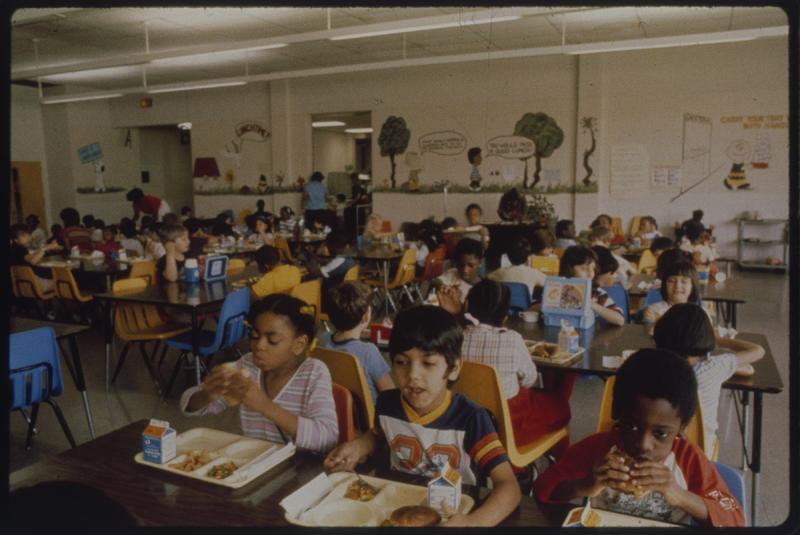Food Equity

Nutritious food is essential to providing children what they need to develop healthy minds and bodies. Children who go to school hungry are less likely to do well, while obesity may affect academic performance, emotional health, and lead to serious health complications later in life.
Throughout the 20th century, the government has crafted policies to address the inequities in American diets. However, minorities and people with low incomes have faced limitations in the ability to obtain safe, fresh, nutritious and affordable foods. The reasons are varied and complex, such as cultural influences, living in areas where healthy foods are unavailable, using food money to pay other bills, and changes in American eating habits. To address these issues requires an understanding of cultures, values, resources, and environments that influence – and discourage – healthy eating and food choices.

Courtesy of National Archives and Records Administration, College Park, MD, photo no. 33-SC-15906c
Policymakers at the local, state, and national level recognize the role that access to healthy food plays in promoting healthy local economies, healthy neighborhoods, and healthy people. Community advocates, legislators and other stakeholders are advancing innovative programs along with environmental and policy solutions as understanding grows about the connections among access to healthy food, what families prepare and eat at home, and good health.
Policymakers at the local, state, and national level recognize the role that access to healthy food plays in promoting healthy local economies, healthy neighborhoods, and healthy people. Community advocates, legislators and other stakeholders are advancing innovative programs along with environmental and policy solutions as understanding grows about the connections among access to healthy food, what families prepare and eat at home, and good health.
In the early part of the 20th century, some families stretched their food dollars with home gardens or available fresh produce. Today, support for locally-grown foods and the soaring cost of food and fuel have created renewed interest in the ways our parents and grandparents made their money go further, such as home canning.
Further Reading
Becerra, B. J., Sis-Medina, R. C., Reyes, A., & Becerra, M. B. (2015). Association Between Food Insecurity and Serious Psychological Distress Among Hispanic Adults Living in Poverty. Preventing Chronic Disease, 12, E206.
Chilton, M., & Rose, D. (2009). A Rights-Based Approach to Food Insecurity in the United States. American Journal of Public Health, 99(7), 1203–1211.
Jernigan, V. B. B., Huyser, K. R., Valdes, J., & Simonds, V. W. (2017). Food Insecurity among American Indians and Alaska Natives: A National Profile using the Current Population Survey–Food Security Supplement. Journal of Hunger & Environmental Nutrition, 12(1), 1–10.
Kwon, S. C., Rideout, C., Patel, S.,et al. (2015). Improving Access to Healthy Foods for Asian Americans, Native Hawaiians, and Pacific Islanders: Lessons Learned from the STRIVE Program. Journal of Health Care for the Poor and Underserved, 26(2 Supp.), 116–136.